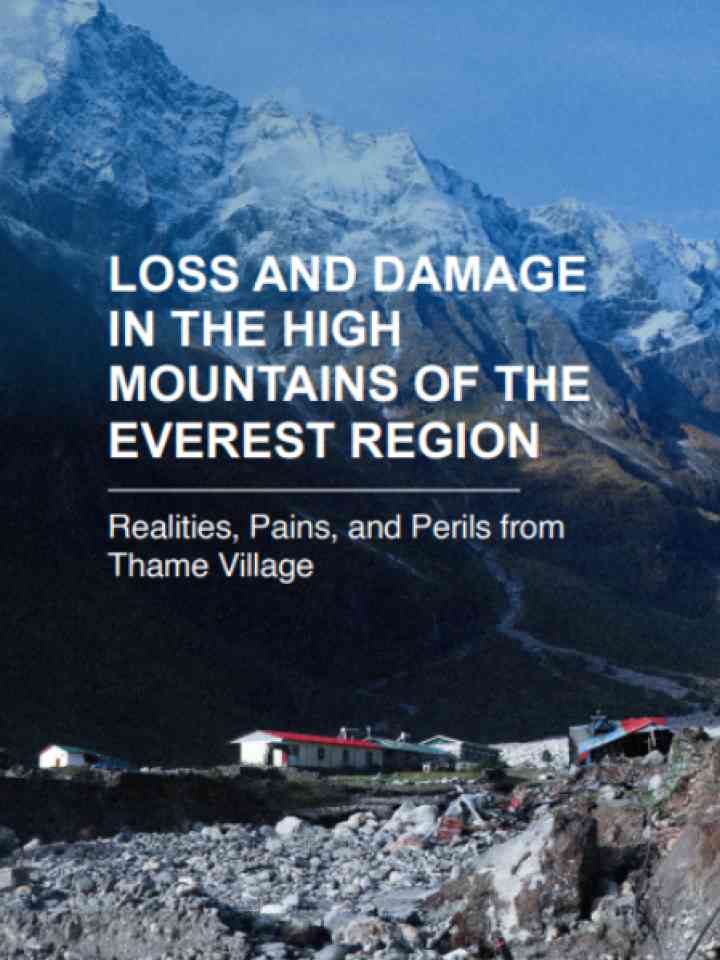Loss and damage in the high mountains of the Everest region: Realities, pains, and perils from Thame Village
Global environmental change including climate change has led to increased extreme weather events, making regions in Nepal fragile and susceptible especially to Glacial Lake Outburst Floods (GLOF). This study assessed GLOF economic and non-economic losses and damages through extensive field research, including eight key informant interviews, 46 household surveys, two focus group discussions, and eight case stories. The findings of this study were validated and triangulated using the municipal data provided by the Khumbu Pasanglhamu Rural Municipality, which includes a detailed survey conducted by the municipality.
This study underscores the need for a comprehensive GLOF risk assessment supported by infrastructures for ground-based monitoring to advance early warning systems, and climate adaptation strategies tailored to high-mountain communities. Furthermore, the study urges financial and technical support in detailed risk assessment to inform local and regional planning so that future development plans are risk-informed. Most importantly, it is imperative to build the capacity of the locals, including communities and authorities, recognizing that they are and will be the first responders during the crisis.
Explore further
